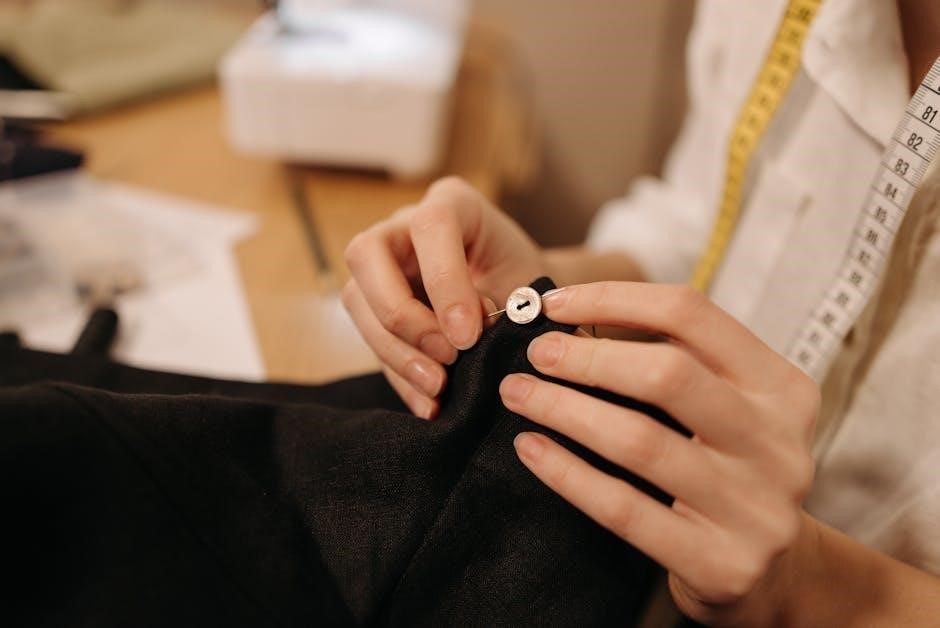Al-Anon Family Groups help families and friends of alcoholics by practicing the 12 Steps and 12 Traditions, adapted from Alcoholics Anonymous, fostering harmony and personal growth through spiritual principles and shared experiences.
Understanding the Role of the 12 Steps and 12 Traditions in Al-Anon
The 12 Steps and 12 Traditions of Al-Anon are foundational tools for personal growth and group unity. The Steps, adapted from Alcoholics Anonymous, guide members toward spiritual awakening and self-reflection, helping them address the emotional and mental challenges of loving an alcoholic. The Traditions ensure harmony within groups, promoting anonymity, unity, and self-support. Together, they foster a supportive environment where members can share experiences, find comfort, and develop healthy relationships. By working the Steps and adhering to the Traditions, Al-Anon members gain the strength to transform their lives and carry the message of hope to others affected by alcoholism. These principles are essential for both individual recovery and the vitality of the fellowship as a whole.

The 12 Steps of Al-Anon: A Path to Spiritual Growth

The 12 Steps, adapted from Alcoholics Anonymous, offer a structured path for Al-Anon members to achieve spiritual growth, self-awareness, and emotional healing, transforming lives through faith and action.
Step 1: Admitting Powerlessness Over Alcohol
Step 1 is the foundation of the Al-Anon program, urging members to acknowledge their powerlessness over alcohol and recognize the unmanageability it brings to their lives. By admitting this reality, individuals begin to let go of denial and accept the impact of addiction on themselves and their loved ones. This step emphasizes the importance of surrendering attempts to control the alcoholic or the situation, fostering humility and openness to spiritual guidance. It marks the first step toward healing and personal growth, encouraging members to embrace the program’s principles and seek support from others who understand their struggles. This admission is a courageous act of acceptance.
Step 2: Believing in a Higher Power
Step 2 invites Al-Anon members to come to believe in a Power greater than themselves. This belief can take many forms, as individuals define their Higher Power personally, whether spiritual, religious, or philosophical. The key is to embrace a sense of hope and trust in something beyond oneself, which can bring guidance and strength. This step helps members shift their focus from attempting to control others to seeking transformation within themselves. By trusting a Higher Power, they find the courage to let go of fear and resentment, fostering emotional healing and peace. This belief becomes a cornerstone for personal growth and serenity in the program.
Step 3: Turning Will and Life Over to God
Step 3 encourages Al-Anon members to make a decision to turn their will and lives over to the care of God, as they understand Him. This step is about surrendering self-will and trusting in a Higher Power’s guidance. It involves letting go of the need to control situations, especially those involving others’ drinking, and instead seeking divine direction. By doing so, members experience a sense of liberation from self-reliance and a deeper connection to their spiritual beliefs. This step helps reduce feelings of helplessness and frustration, fostering a sense of peace and clarity. It serves as a foundation for further personal growth and spiritual transformation within the Al-Anon program.

Step 4: Making a Searching and Fearless Moral Inventory
Step 4 involves taking a thorough and honest look at oneself, identifying past mistakes, and understanding how they have impacted relationships and personal well-being. Members are encouraged to write down their resentments, fears, and sexual conduct, examining the role they played in these situations. This step requires courage and self-awareness, as it involves confronting painful truths and taking responsibility for one’s actions. The goal is to identify patterns of behavior that have contributed to suffering and to gain clarity on how these can be addressed. This moral inventory is not about self-criticism but about growth, preparing members for the next steps of healing and transformation.
Step 5: Admitting Wrongs to God, Ourselves, and Others
Step 5 focuses on openly acknowledging past wrongs and harm caused to others, as well as to oneself. This step involves sharing these admissions with a trusted person, such as a sponsor, to release the burden of guilt and shame. It emphasizes honesty and accountability, fostering healing and liberation from self-deception. By admitting wrongs, members begin to rebuild trust and intimacy in their relationships. This step is a powerful catalyst for personal growth, encouraging humility and a willingness to change. It also lays the foundation for making amends, helping members move toward reconciliation and emotional freedom.
Step 6: Being Ready to Have Defects Removed
Step 6 focuses on cultivating readiness to let go of character defects that hinder personal growth and relationships. It encourages members to embrace a willingness to change and to trust that a Higher Power can help remove these shortcomings. This step is about self-reflection and humility, acknowledging that true transformation comes from surrendering ego and resistance. By being open to spiritual guidance, individuals can move beyond self-centeredness and develop greater empathy and understanding. This step prepares the groundwork for Step 7, where defects are actively addressed and removed, leading to a more peaceful and fulfilling life.
Step 7: Humbly Asking for Shortcomings to Be Removed
Step 7 emphasizes humility and honesty in seeking the removal of personal shortcomings. It involves asking a Higher Power to eliminate character defects, fostering spiritual growth and self-awareness. This step requires willingness to let go of old patterns and embrace change. By humbly surrendering defects, members open themselves to divine guidance and transformation. It’s not about self-reliance but trusting in a power greater than oneself. This step strengthens faith and prepares individuals for spiritual awakening. Through Step 7, Al-Anon members learn to release control and accept help, leading to greater peace and emotional freedom in their lives.
Step 8: Making Amends to Those We Have Harmed
Step 8 involves creating a list of individuals harmed by one’s actions and becoming willing to make amends. This step fosters accountability, healing, and rebuilding trust. It requires honesty and self-reflection to acknowledge past wrongs. Members are encouraged to consider how their behavior affected others, especially in relation to a loved one’s drinking. The focus is on taking responsibility without making excuses. This step prepares individuals for Step 9, where amends are actually made. It promotes personal growth and helps restore relationships damaged by past actions. Through Step 8, Al-Anon members practice integrity and compassion, paving the way for spiritual and emotional healing.
Step 9: Continuing to Take Personal Inventory
Step 9 emphasizes the importance of maintaining ongoing self-reflection and honesty in daily life. It builds on Step 4 by encouraging members to regularly examine their actions and their impact on others. This step involves promptly addressing mistakes and making amends when harm has been caused; By practicing continuous inventory, individuals foster spiritual growth and humility. It reinforces the principle of taking responsibility for one’s actions while cultivating compassion and understanding. Step 9 helps members develop a greater awareness of their behavior, promoting positive changes and harmony in relationships. This practice strengthens their commitment to personal accountability and supports long-term emotional and spiritual well-being within the Al-Anon program.
Step 10: Seeking Guidance Through Prayer and Meditation
Step 10 encourages Al-Anon members to seek guidance through prayer and meditation, fostering a deeper connection with their Higher Power. This step emphasizes the importance of maintaining spiritual awareness and balance in daily life. By practicing prayer and meditation, individuals can gain clarity, peace, and the strength to navigate challenges. It helps members stay humble, open, and willing to follow spiritual principles. Regular reflection allows them to recognize their progress and remain grateful for the blessings in their lives. Step 10 supports ongoing personal growth and strengthens their ability to apply the program’s principles in all situations, leading to greater emotional and spiritual well-being.

Step 11: Carrying the Message to Others

Step 11 focuses on carrying the message of hope and recovery to others affected by alcoholism. It emphasizes the importance of sharing experiences and insights gained through the Al-Anon program. By doing so, members help others find the support and guidance they need. This step fosters a sense of purpose and fulfillment, as helping others strengthens one’s own recovery. It also encourages active participation in meetings and service work, deepening the member’s commitment to the program. Through Step 11, Al-Anon members embody the spirit of service, spreading love, understanding, and the principles of the 12 Steps to those still suffering.
Step 12: Having a Spiritual Awakening
Step 12 is the culmination of the Al-Anon program, where members experience a spiritual awakening as a result of working the previous steps. This awakening often brings a deeper understanding of oneself, others, and the world. It is marked by a shift in perspective, leading to greater peace, acceptance, and compassion. Through this step, members are encouraged to share their experiences and insights with others, continuing the cycle of recovery and growth. The spiritual awakening is not a single event but an ongoing process that enhances emotional well-being and relationships. It fosters a sense of purpose and fulfillment, guiding members to live in harmony with the principles of the program.

The 12 Traditions: Guidelines for Harmony in Al-Anon Groups
The 12 Traditions provide guidelines for group unity and harmony in Al-Anon. They emphasize principles like anonymity, self-support, and avoiding outside issues to ensure the fellowship’s integrity and spiritual growth, fostering sustained recovery and mutual respect among members.
Tradition 1: Our Common Welfare Comes First
Tradition 1 emphasizes that the well-being of the Al-Anon group as a whole is the top priority. It reminds members that the survival and effectiveness of the fellowship depend on unity and collective focus. Personal interests or opinions should not overshadow the group’s primary purpose of supporting one another. By prioritizing the group’s needs, members foster an environment of trust, respect, and shared recovery. This tradition encourages selflessness and collaboration, ensuring that Al-Anon remains a safe space for everyone to grow spiritually and emotionally. It serves as the foundation for all other traditions, promoting harmony and the enduring success of the fellowship.
Tradition 2: A Loving God as Our Ultimate Authority
Tradition 2 places a loving God, as each individual understands Him, as the ultimate authority in Al-Anon. This emphasizes that spiritual principles guide the fellowship, rather than external rules or human leaders. It fosters unity by encouraging members to rely on a Higher Power, rather than personal opinions, in group decisions. This tradition ensures that Al-Anon remains a spiritual program, open to diverse beliefs, while maintaining its core focus on recovery. By trusting in a loving God, members find strength, guidance, and wisdom to navigate challenges. This tradition promotes humility, faith, and reliance on a power greater than themselves, enriching personal and collective growth.
Tradition 3: The Only Requirement for Membership

Tradition 3 states that the only requirement for membership in Al-Anon is being affected by someone else’s drinking. This ensures inclusivity, welcoming anyone seeking help, regardless of personal beliefs, background, or circumstances. It eliminates barriers like dues, affiliations, or specific behaviors, making the program accessible to all. This tradition fosters unity by focusing on shared experiences rather than differences. It encourages an environment of acceptance, where members can freely share and grow. By keeping the requirement simple, Al-Anon remains open to those seeking support, reinforcing its purpose as a haven for healing and understanding.
Tradition 4: Autonomy of Each Group
Tradition 4 emphasizes the autonomy of each Al-Anon group, allowing them to function independently while still being part of the larger fellowship. This means each group has the freedom to make decisions tailored to their specific needs and circumstances. Groups can choose how to conduct meetings, manage finances, and address local issues, as long as they align with Al-Anon’s overall principles. This tradition ensures flexibility and adaptability, enabling groups to respond effectively to their members’ unique challenges. Autonomy fosters a sense of ownership and responsibility within the group, while still maintaining connection to the broader Al-Anon community. It supports the fellowship’s strength by allowing diversity in approach while upholding shared values.
Tradition 5: Maintaining Anonymity
Tradition 5 focuses on the importance of maintaining anonymity within Al-Anon. Anonymity ensures that members’ identities and shared experiences remain confidential, fostering a safe and trusting environment. This tradition encourages humility and equality, preventing any individual from seeking recognition or special treatment. By safeguarding anonymity, Al-Anon protects its members from stigma and judgment, allowing them to share openly without fear of consequences. It also reminds members to avoid identifying others as Al-Anon participants outside of meetings. This principle strengthens the fellowship by promoting unity and focusing on the shared goal of recovery rather than individual recognition. Anonymity is a cornerstone of Al-Anon’s spiritual foundation.
Tradition 6: Avoiding OutsideAffairs
Tradition 6 emphasizes the importance of avoiding involvement in outside organizations or issues that could divert Al-Anon’s focus from its primary purpose. This ensures that the fellowship remains dedicated to helping families and friends of alcoholics without external distractions. By staying neutral and avoiding affiliations, Al-Anon maintains its independence and avoids conflicts of interest. This tradition also safeguards the group from being influenced by external agendas, allowing members to concentrate on their personal recovery and spiritual growth. Avoiding outside affairs fosters unity and clarity within the fellowship, ensuring that meetings remain a safe space for sharing and support. It protects the integrity of Al-Anon’s mission and promotes harmony among members.

Tradition 7: Self-Support Through Contributions
Tradition 7 ensures Al-Anon’s financial independence by relying on contributions from its members. This principle prevents the fellowship from seeking outside funding, maintaining its autonomy and avoiding financial dependencies. Members are encouraged to contribute what they can, whether through money, time, or service, to support group activities and outreach. This tradition promotes self-reliance and responsibility, ensuring that Al-Anon remains free from external influences. Contributions are voluntary and anonymous, reflecting the spirit of generosity and equality among members. By adhering to this tradition, Al-Anon maintains its integrity and focuses on its primary purpose of helping families and friends of alcoholics. It fosters a sense of unity and shared responsibility within the fellowship.
Tradition 8: No Professional Class in Al-Anon
Tradition 8 emphasizes that Al-Anon should never establish a professional class or paid leadership. This ensures the fellowship remains accessible and free for everyone. The absence of professionals keeps the focus on shared experience and mutual support, rather than paid expertise. All roles within Al-Anon, from group leadership to service positions, are filled by volunteers. This tradition maintains the integrity of the program and ensures that no individual or group profits from the suffering of others. It fosters equality among members and keeps the program grounded in its spiritual principles. By relying on volunteers, Al-Anon remains a grassroots movement focused on helping families and friends of alcoholics achieve emotional recovery.
Tradition 9: Service to the Fellowship

Tradition 9 highlights the importance of service within Al-Anon, ensuring the fellowship operates effectively. It emphasizes that service is carried out by volunteers, not professionals, fostering a sense of unity and shared responsibility. Members are encouraged to contribute at all levels, from local groups to the World Service Office. This tradition ensures that no individual or group seeks personal gain, keeping the focus on helping others. Service strengthens the fellowship and allows it to reach those in need. By giving back, members deepen their own recovery while maintaining the integrity of the program; Service is a cornerstone of Al-Anon, promoting spiritual growth and selflessness.
Tradition 10: No Opinion on Outside Issues
Tradition 10 ensures Al-Anon remains neutral on external issues unrelated to its purpose, focusing solely on helping members affected by alcoholism. This tradition prevents the fellowship from taking official stances on controversial topics, maintaining unity and avoiding divisions. While individual members may hold personal opinions, the group as a whole avoids public debates or endorsements, ensuring meetings stay focused on recovery. This neutrality protects anonymity and aligns with Tradition 11, maintaining a safe, non-judgmental environment. By steering clear of outside affairs, Al-Anon upholds its primary mission, fostering an environment dedicated to spiritual growth and support without distractions from external conflicts or sensitivities.
Tradition 11: Anonymity in Public Media
Tradition 11 emphasizes the importance of maintaining anonymity in public media to protect the privacy of Al-Anon members. This tradition ensures that members’ identities remain confidential, avoiding any public exposure that could lead to stigma or personal consequences. It applies to all forms of media, including TV, radio, films, and the internet. By safeguarding anonymity, Al-Anon protects its members and their families while preserving the integrity of the program. This principle also extends to avoiding the use of real names, faces, or identifying details in public settings. Tradition 11 reinforces the commitment to confidentiality, allowing members to feel safe and supported within the fellowship.
Tradition 12: Spirit of Service and Love
Tradition 12 is the spiritual foundation of all Al-Anon traditions, emphasizing the importance of service, love, and humility. It reminds members to place principles above personalities, fostering unity and harmony within the fellowship. This tradition encourages selflessness, guiding members to prioritize the well-being of others and the group as a whole. By embracing this spirit, Al-Anon members cultivate a deeper connection to the program and its purpose. Tradition 12 also reminds members to avoid gossip or criticism, focusing instead on constructive actions that promote healing and growth. Ultimately, it inspires a commitment to the greater good, ensuring the fellowship remains a safe and supportive environment for all.










